Note that we have never set up a denitrifying reactor for our aquariums and will never set up such a reactor. We decidedly do NOT recommend that one build such a reactor to reduce water changes. It’s much easier to either do water changes or add plants to a set up. And denitrifying reactors can kill fish if improperly set up. But there are many in the hobby that love DIY projects like this just out of scientific curiosity. If you’re of that bent, go for it.
On a further note, we received one comment from an an engineer who designs denitrifying sewage treatment plants and who has a bunch of aquariums. He ONLY does water changes to control his nitrate levels. He said he would never consider using a denitrifying reactor on his aquariums. Even this expert wouldn’t tackle building a reactor like this.
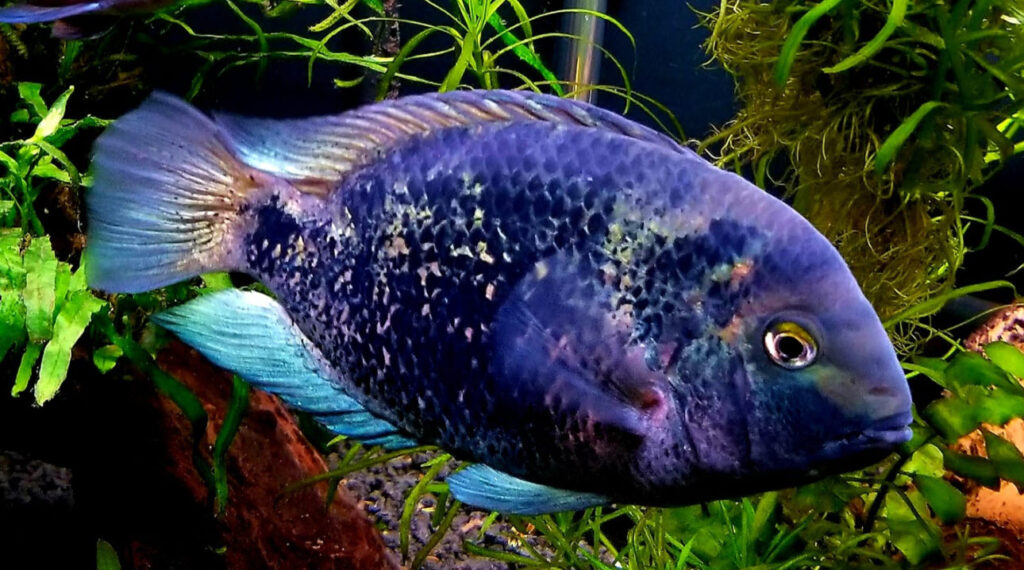
Commercial Denitrifying Reactor Design
There are some denitrifying reactor designs which are used on a large scale in several locations in Europe to reduce nitrates in sewage effluent to less than 3 ppm. These designs are illustrated by the following schematics (from the “Design and Operation of Moving Bed Biofilm Reactor Plants for Very Low Effluent Nitrogen and Phosphorus Concentrations”, Rusten, 2007):
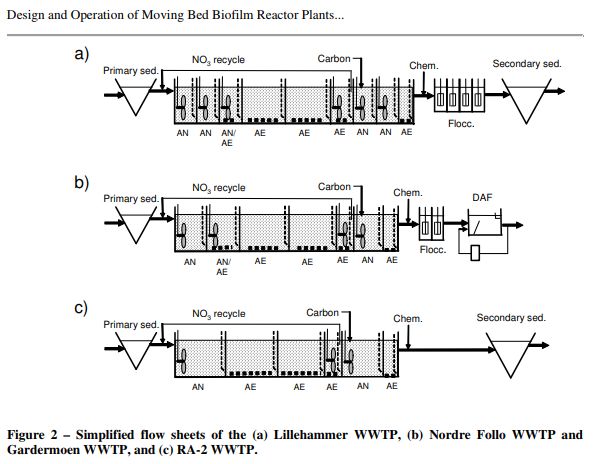
The aerobic sections (denoted by AE) have air being pumped into them (the dotted line on the bottom). The anoxic sections are denoted by the letters AN. These sections are sealed and tightly closed off to the air. Note how each AN section has a bladed pump to move the solution and the media round the reactor, along with a “carbon” addition (i.e. a carbohydrate addition).
What is interesting here is that these reactors do not add the carbon addition in one section to remove the oxygen and then move it into a separate section to remove the nitrate as nitrogen gas. As the oxygen rich water enters the chamber it is rapidly diluted and rapidly depleted of what oxygen it has. So a separate section is not needed. However these reactors do require a separate oxygen rich section to make the ammonia into nitrate before it goes to the anoxic section.
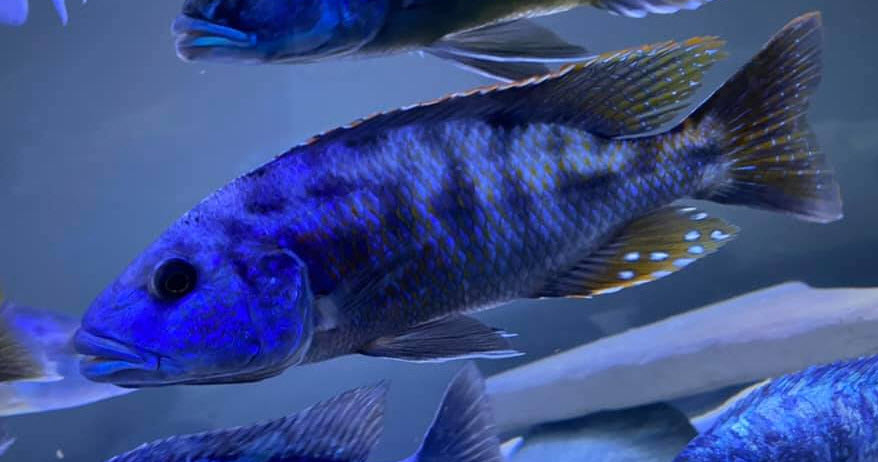
Reactor Design for Aquariums
This proven European design is easily modified for the aquarium. This is one such design.
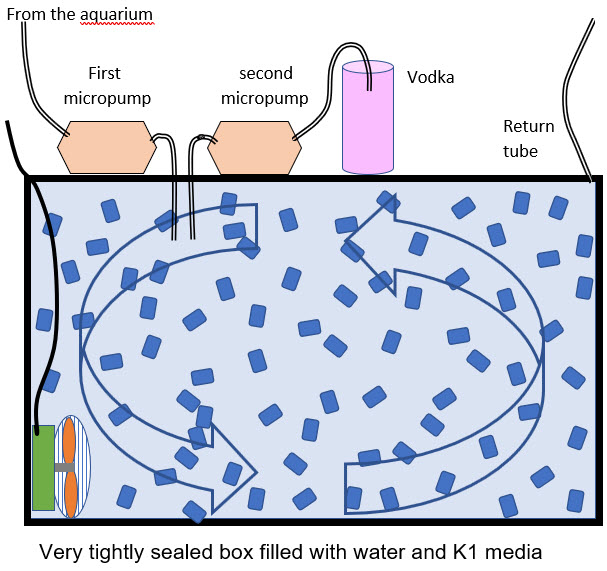
The small flows here need to be meticulously crafted to give nitrate reduction:
- too much vodka and there will be a bacterial bloom in the aquarium water
- too little vodka and you will be pouring nitrite into the aquarium
- too much water from the aquarium and the bacteria won’t have time to work (denitrifying bacteria work very slowly)
- too little flow of water from the aquarium and the nitrate won’t be dropped as much as possible.
The amount of vodka added will govern the redox or ORP (measured via electrode) which in turn will determine if denitrification occurs. Target values for nitrate reduction without formation of nitrite should be -50mv to -250mv ORP.
There are some experimental aquarium denitrification designs which are very similar to this design. One such design can be found in the paper: “Removal of nitrate in aquaria by means of electrochemically generated hydrogen gas as electron donor for biological denitrification”, Grommen et al, 2005.
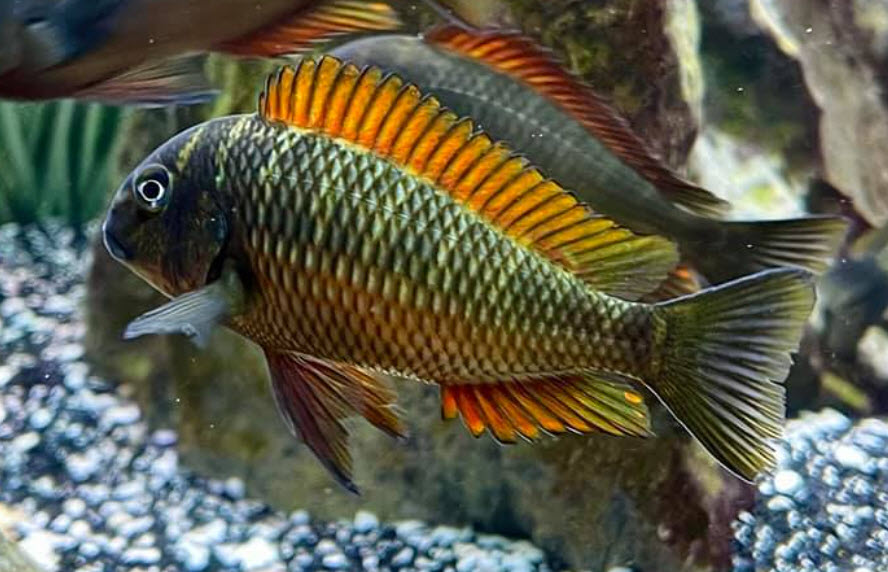
Alternative Design Using a Canister Filter
Note that this design can be altered to give a less efficient but easier to make design.
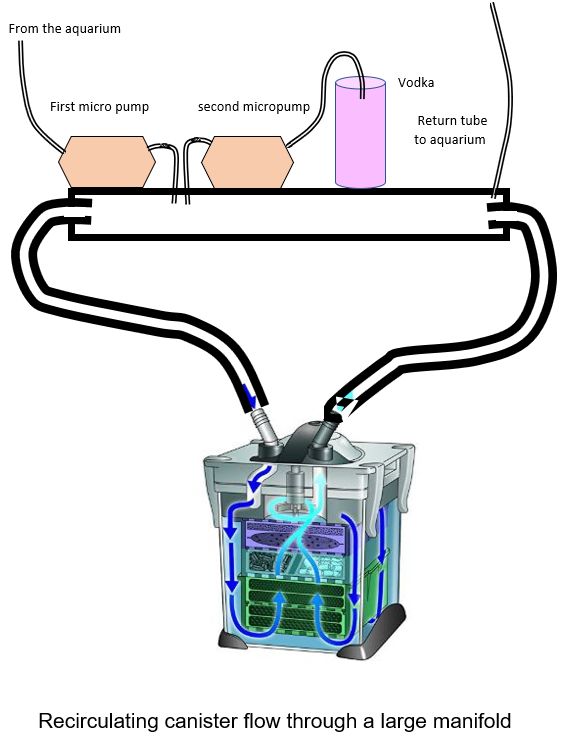
Obviously the canister in this design can be replaced with a pump and something like a long pipe filled with media. Any tightly sealed container with media in it and a pump will do the job. The more surface area in the filter (i.e. both a large volume AND a good media like foam, K1 or pot scrubbers) and the more powerful the pump the better it will work.
It is important to emphasis that any anoxic denitrifying reactor must be tightly sealed to prevent ANY contact with air. It cannot be an open sump.
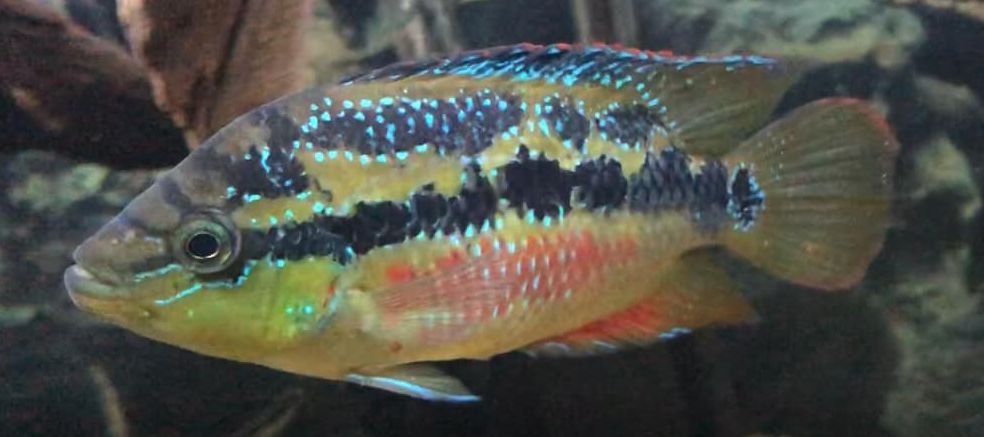
Note there is another type of reactor which can reduce nitrates. This is a reactor which works through assimilatory denitrification. The uptake by fungi, water molds and bacteria of nitrate is called “assimilatory denitrification”. It is common and well documented. This type of denitrification can be used successfully to keep nitrates low in the aquarium. But using this type of denitrification is challenging. For more on this go to this link:
8.9.3. Assimilatory denitrificatie
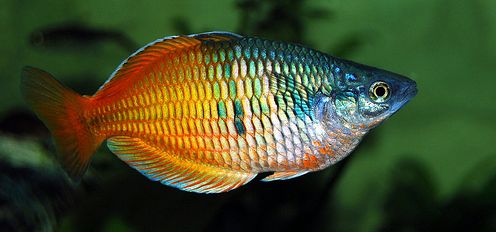
Meer informatie
For information on the science of anoxic denitrification click on the following links:
14.2.4. Anaerobic Substrates (Deep sand beds)


